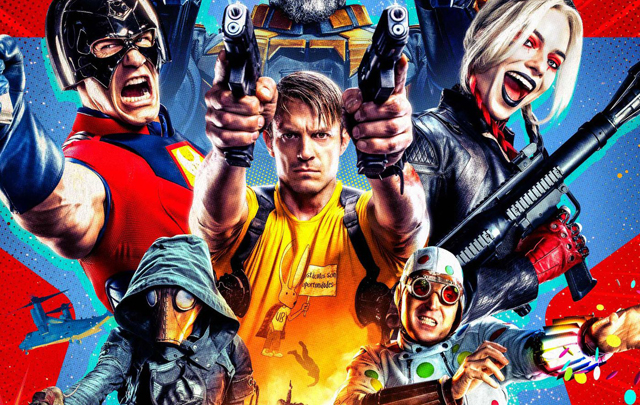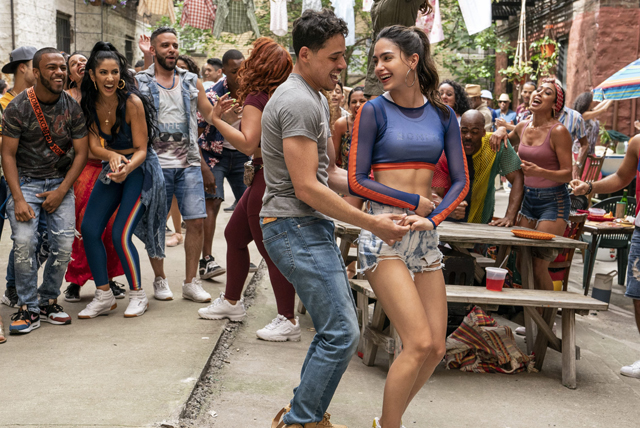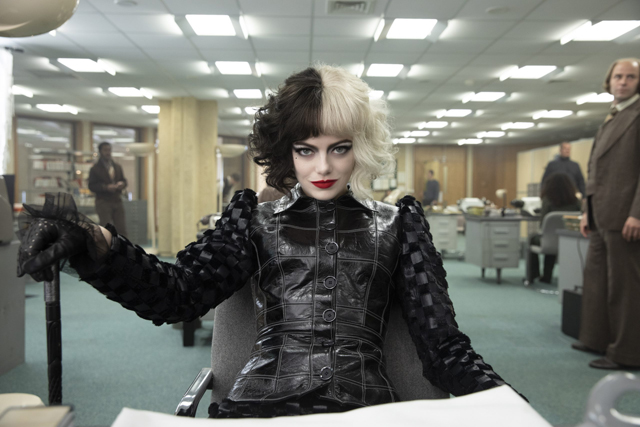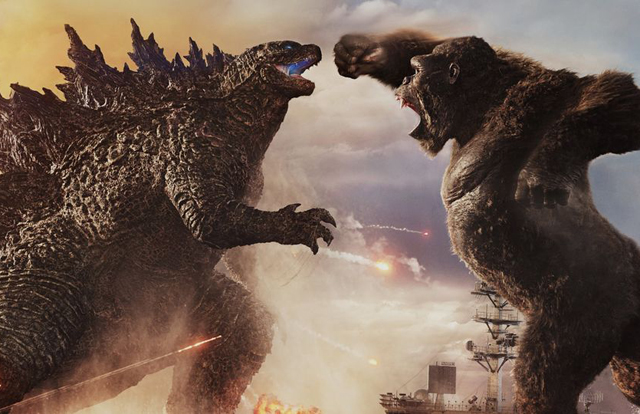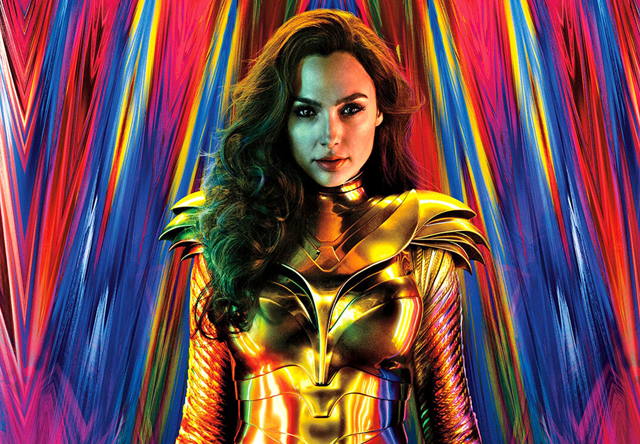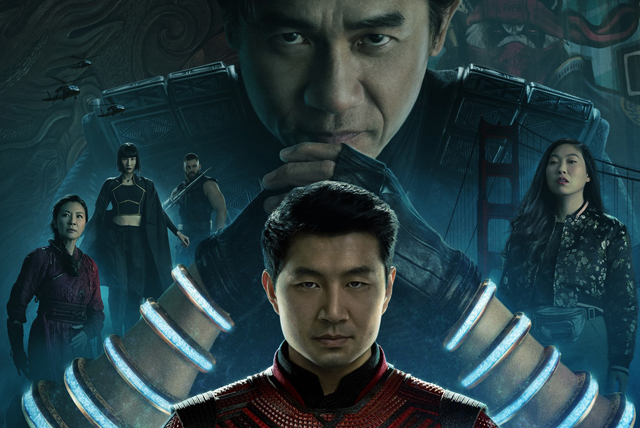
If you can count on one studio to push forward on it’s plans even in the midst of a global pandemic affecting worldwide box office, it would definitely be Marvel. After a year off due to the pandemic related shutdowns, Marvel returned with a vengeance in 2021. In addition to their big screen releases, Marvel was also making a statement in the streaming wars, with shows like Wandavision, The Falcon and the Winter Soldier, and Loki making a statement on Disney+, with their own narratives tied in with those of the larger Marvel Cinematic Universe. But, even with that offshoot on streaming, Marvel and Disney still had big plans for their mega-franchise on the big screen, which unfortunately was dealt with increased challenges due to an ongoing pandemic. Theaters having finally reaching a point where they could operate again at near full capacity still was not enough assurance for studios to gamble on releasing their movies over the course of the last summer. Some still did, and the result was mixed. Some movies prospered while others floundered, and the overall numbers are still underwater from where they had been pre-pandemic. One of the movies that did manage to do better than others was Marvel’s Black Widow, which Disney put out in theaters in a hybrid release with Disney+ Premiere Access. Overall, Black Widow did win the Summer of 2021 with the highest domestic box office, but even still, it was on the low end for the MCU as a whole. Some wonder if the hybrid theatrical/ streaming release may have in some way undercut Black Widow‘s long term box office grosses. For Disney, Marvel’s parent studio, that seems to be a theory taking hold, as they decided to take a different route with their next film in the line-up by granting it a theatrical only window of 45 days. And that film is the bold “experiment” known as Shang-Chi and the Legend of the Ten Rings.
Shang-Chi is certainly not one of the more well known heroes from the Marvel comics, though he has enjoyed his fair share of devoted fans. First introduced in 1975 by creators Steve Englehart and Jim Starlin of Marvel Comics, Shang-Chi was heavily inspired by the popularity of martial arts legend Bruce Lee. Utilizing mastery of Wushu style martial arts, he developed into one of the more noteworthy heroes within the Marvel canon who did not rely upon any supernatural power. That’s not to say that he hasn’t at times has had to rely on help from the supernatural world within Marvel Comics, but for the most part he is a self-made, self-reliant hero. Though his presence in the Marvel universe is noteworthy for it’s Asian representation, it hasn’t been without controversy either. For one thing, part of Shng-Chi’s backstory is that he is the song of supervillain Fu Manchu, a character (not originally created by Marvel) who has been used in movies and comic books often as a racist trope to slander Asian people in various media. Over time, Marvel lost the rights to use Fu Manchu as a character in their comics, and Shang-Chi’s backstory has been altered to separate itself from the racism of it’s past. Even still, the same backstory remains of Shang-Chi having this dark past of being the son of a criminal overlord; first in the comics with a newly created character named Zheng Zu, and in this movie, it’s changed again to reintroduce an already established villain from a different franchise, namely Wenwu: The Mandarin. It’s interesting that not only has Marvel seen Shang-Chi as a worthy addition to their MCU family, but they are even betting on his movie to perform solely on it’s own theatrically. The question remains, is Shang-Chi a character strong enough to warrant a risky challenge at the box office at this time, or is he a sacrificial experiment to reinforce a studio’s push towards more streaming options.
Shang-Chi and the Legend of the Ten Rings wastes no time in getting the adventures started. We are introduced to a young Asian man living in San Francisco named Shaun (Simu Liu) who when not working Valet with his best friend Katy (Awkwafina) is out late partying and singing karaoke. But on one day when they are taking the bus to work, the duo of Shaun and Katy are accosted by sinister looking thugs intent of grabbing a pendant that Shaun wears everywhere he goes. To the amazement of all those on the bus, including Katy, Shaun not only holds his own in the fight against the thugs, but he also displays almost inhuman martial arts skills. Even still, one of the thugs named Razor Fist (Florian Munteanu) manages to steal the pendant away. This prompts Shaun to leave town in search of the pendant. He of course now comes clean to his friend Katy about his past and reveals that his real name is Shang-Chi. He tells her that the men were a part of the Ten Rings terrorist organization, which is run by the Wenwu (Tony Leung) his father. Wenwu, aka The Mandarin, is a centuries old war lord who wields the power of the mystical Ten Rings, which gives him super powers as well as eternal life. He created the Ten Rings as a multinational ring of anarchic terrorists who among other things have toppled governments and kidnapped high profile targets (such as Tony Stark in the original Iron Man) for ransom, with Wenwu becoming increasingly powerful and wealthy along the way, as well as more ruthless. Upon her insistence, Katy accompanies Shang-Chi to China, where he seeks out his estranged sister Xialing (Meng’er Zhang), who keeps a similar pendant to his. Both were gifts from their deceased mother Li (Fala Chen), who Wenwu believes left them keys to finding the mystical land of her origin known as Ta Lo, where Wenwu still mistakenly believes she still lives. Upon learning of their father’s dangerous plans, Shang-Chi and Xialing set out to find Ta Lo before their father can, with Katy and her expert driving skills helping along the way. And as we soon learn, there is more at the end of the road in Ta Lo than they initially realize, including an even more sinister force that could be unleashed by their father if he is not stopped.
The premiere of Shang-Chi and the Legend of the Ten Rings comes at an interesting crossroads for Marvel. After the mixed results of Black Widow’s premiere in the Summer, Disney is now seeing Shang-Chi as testing ground for the strength of the theatrical market in the face of an ongoing pandemic crisis. This led to a bit of controversy as current Disney CEO Bob Chapek referred Shang-Chi to an “experiment,” which is wording that the movie’s star Simu Liu took issue with. It’s unfortunate that the studio is treating this less like an exciting new chapter in their mega-franchise, and more like a guinea pig in their test of the current state of the theatrical market. It’s unfortunate that this movie is releasing under these circumstances, because had it not, this would have likely been a real game-changing movie for Marvel. For one thing, it marks a significant moment for the MCU as it introduces an Asian superhero into the Avengers line-up for the first time. There have been Asian characters in the MCU before, but none have been the headliner like Shang-Chi, and for Marvel, they are hoping that this movie does for the Asian community what Black Panther did for black audiences. This is reflected by the fact that the movie is top to bottom representative of the Asian community, both in front and behind the camera. Director Destin Daniel Cretton tapped into his own Asian heritage, particularly when it comes to cinematic influences, when making this movie and it shows. People who are familiar with Wushu martial arts films such as those by filmmaker Zhang Yimou (Hero, House of Flying Daggers) will see a lot of that same style present in Shang-Chi. And while that style does set it apart from other Marvel movies, it’s still distinctively an MCU film, with several notable Easter eggs throughout. I also like that the movie takes time to make a pseudo-apology for the Mandarin fake-out in Iron Man 3 (2013) which is still one of the low points of the MCU. As a stand alone feature in the MCU, it works well enough to establish our hero and where he will fit in this world, while at the same time doing some incredible world building along the way.
Unfortunately, there are some glaring flaws with the movie as well. For one thing, it falls into the unfortunate trap of following the Marvel formula a little too stringently. In particular, the movie loses focus as it heads towards it’s end, a “third act”-itis that is sadly becoming more and more of a problem for more Marvel properties. Seen likewise in other properties that succumbed to underwhelming climaxes as of late in the MCU, like Black Widow and Wandavision, Shang-Chi unfortunately breaks away from the more interesting character building that happens earlier in the film to raise the stakes higher as it enters the home stretch. And this unfortunately drowns out what made the movie interesting in the first place with a lot of CGI-enhances mayhem thrown at us on screen. Though this movie still remains more visually interesting than say Black Widow, which really turned generic in it’s final climax, Shang-Chi still feels a bit hollow in it’s closing minutes. The movie works a lot better when it departs from formula rather than steering into it. I especially found the earlier fight scenes, like the one on the bus, to be far more engaging than what essentially turns into a kaiju fight in the film’s climax. And one of the biggest victims of the movie loosing it’s focus as it adheres to formula is Shang-Chi himself. We really don’t get much character development from him throughout the movie as he remains so of a passive traveler through all the different points in the plot. The only thing that saves him as a character is the natural charisma of Simu Liu, who really has to do some heavy lifting here to bring out more character than what is on the page. Still, overall his development into a hero feels more generic than say what we’ve seen from Spider-Man, or Black Panther, and even the early Avengers. It’s overall a problem of the movie trying to do way too many different things instead of focusing on where the real intrigue of the story lies, which is Shang-Chi’s relationship with his father.
Though the story is a bit on the weak side, the same can’t be said about the cast. They are definitely the highlight of this movie. Chinese-Canadian Simu Liu, who was introduced to the world on the Comic Con stage in 2019 only days after being officially cast, is immediately magnetic on screen, and though he’s let down a bit by the screenplay he’s given, he nevertheless shines through with infectious charisma that absolutely certifies him as a perfect choice for this role. And being already proficient in martial arts before hand also lends some authenticity to the fight scenes in this movie, which requires Simu to do some incredible moves in front of the camera without the aid of visual effects. He also has incredible chemistry with Awkwafina as Katy. Her presence in the film is primarily to provide comic relief, but she also works well as that connection to a normal life that Shang-Chi values so much. I really appreciate the fact that the movie does break a bit from formula and doesn’t immediately turn their relationship in the movie into a romantic one. Shang-Chi and Katy pretty much remain platonic friends right up to the end, though it’s a relationship that is certainly stronger than just casual. A lot of the movie’s best moments belong to the two of them together, and you really get the sense that it’s a friendship that drives Shang-Chi to be a better person overall. Though they both make strong leads, it’s almost certainly going to be the case that the most talked about performance in this movie is Tony Leung as Wenwu. In a very interesting reimagining of the famed Marvel supervillain, Leung commands the screen, portraying Wenwu in this quiet intensity like an Asian Michael Corleone. Long considered one of the greatest actors of his generation, both in his native China and worldwide, Leung’s presence here is a real blessing for Marvel. He brings a gravitas to the role that really affirms Wenwu as a top tier Marvel villain; and really helps to make up for the disappointing Mandarin fake-out in Iron Man 3. It’s also significant that pretty much the entire cast (with only a couple exceptions) is made up of Asian actors. Even a previously established Asian character in the MCU, Wong (played by Benedict Wong) from Doctor Strange (2016) gets to participate briefly in this movie; which is not a spoiler because he appears in the trailer. That thorough Asian representation throughout the movie alone is pretty significant, not just for a Marvel movie, but for any studio movie.
And while I do nitpick Destin Daniel Cretton’s handling of the story itself, I do commend his staging of the fight scenes in this movie. Working for the first time on a large scale film like this, Cretton is not a director you would first think of to take on a Wushu style martial arts epic. Up until now, he’s been more known for small, intimate dramas like Short Term 12 (2013) or Just Mercy (2019). But, Marvel certainly sees potential in rising talents and believed Cretton was up to the task of bringing Shang-Chi to the big screen. In particular, Cretton shows quite a bit of creativity in staging the fight scenes in this movie. The previously mentioned bus fight in particular is a noteworthy standout, because of it’s combination of close quarters fighting and the fact that it’s also on a moving vehicle in the middle of San Francisco traffic. Another fight on bamboo scaffolding also presents another stand-out moment, with specific nods to the crazy stunt work of Jackie Chan being spotlighted in that scene. And while the CGI fest that makes for a messy climax in the movie’s final act loses some of the movie’s more intimate charm, it still makes the finale showdown between Shang-Chi and Wenwu worthy of what’s come before. Considering that both actors, Liu and Leung, are experienced in martial arts, it makes it all the more satisfying watching them fight each other on screen, especially knowing that one of them came from the John Woo school of action movies. I especially like the way that the Ten Rings themselves come into play as part of the fight, both as a superweapon and as something more integral to the story that brings these characters together. It’s also interesting how Destin Daniel Cretton mixes his Asian cinema influences, bringing in the grittiness of a John Woo action film and mixing it with the ethereal fantasy of a Zhang Yimou epic, and even injecting a bit of the intimate personal drama of Wong Kar-Wai. It’s a movie deeply entrenched in the cinematic traditions of past Asian masters, but brings a great amount of it’s own voice to the mix and likewise also manages to fit perfectly within the grander Marvel Cinematic Universe. I have no doubt that the one thing this movie will undoubtedly accomplish is bringing more eyes to past Asian cinema, which would be an especially good outcome because many of those classics from these great Asian auteurs are due for rediscovery.
So, on it’s own, it’s a perfectly suitable introduction for a character that has really yet to emerge as an important player in the Marvel canon. If anything, this movie will do a lot to raise Shang-Chi‘s stock as a comic book character, and more importantly, raise up an Asian presence in the ongoing narrative that is the MCU. Already, the movie is being proclaimed as an Asian Black Panther, but I think that it’s unfair to have to stack this film up against another groundbreaking film in the Marvel universe. Shang-Chi is piece of a grander puzzle, but it has to stand on it’s own as it’s own story. There are quite a few things that I wish were a bit better about the movie, namely it’s unfocused screenplay, but overall it does the job of making us like it’s central hero. Shang-Chi really had a lot of hurdles to clear, especially with the fact that he is a mostly unknown character in comparison to say Iron Man, Captain America, Spider-Man and Black Panther. In some respects, a better comparison for Shang-Chi would be what Marvel accomplished with Guardians of the Galaxy. Guardians also started off as a very obscure title that was elevated to new heights thanks to it’s placement in the MCU. Now the whole world knows the team of the Guardians of the Galaxy and speaks of them in the same breath as the Avengers. All it took was a well crafted movie that appealed to a broad audience, and the hope is that Shang-Chi can achieve the same outcome and move beyond just his own small but devoted fanbase. It’s too early to tell if it will work, but if it does, a lot of good things will come of it. Not only will it give Asian representation in Hollywood a big boost, but it will also help turn Shang-Chi into more than just a novelty character and instead put him in the same league as Marvel’s A-team. Not only that, but it will also likely boost Simu Liu into another level of stardom, which he already seems to have deftly accomplished since being cast in the first place. In addition, it will hopefully bring new eyes to a long history of Asian cinema, especially if it helps people rediscover the spectacular body of work that Tony Leung has amassed over the years. So, even though I have some misgivings about the movie as a whole, I will certainly be extremely happy if this movie becomes a big hit for Marvel, not just for the sake of survival of the theatrical industry, but for all the good things it will do for Asian cinema in general, past and present. In the end, that will be Shang-Chi’s most heroic accomplishment, and it’s something we should certainly be rooting for.
Rating: 7.75/10
